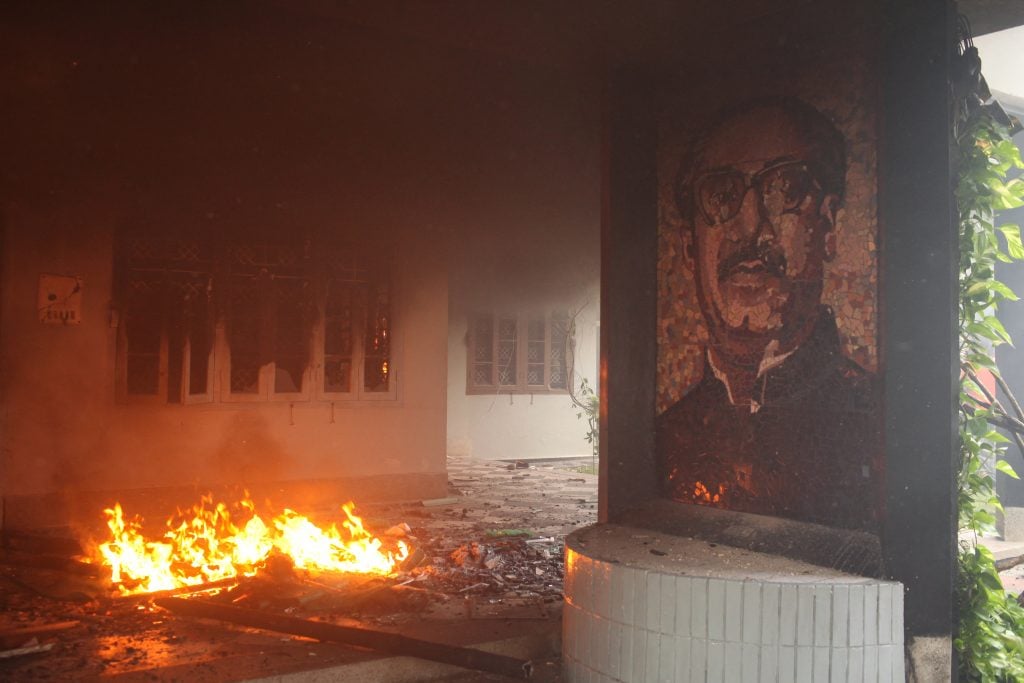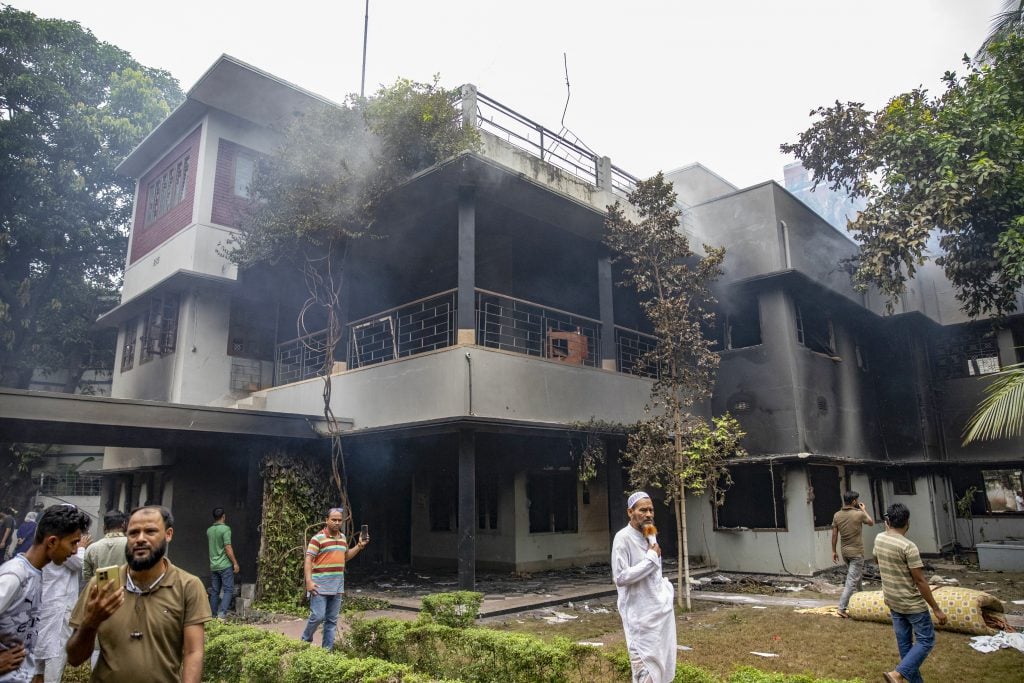Law & Politics
Protestors Set Cultural Institutions on Fire in Bangladesh
Footage is emerging of buildings that have been gutted by looters and scorched by fire.

Footage is emerging of buildings that have been gutted by looters and scorched by fire.

Jo Lawson-Tancred

Cultural institutions in Dhaka, Bangladesh were targeted by protestors on Monday. Several locations across the capital, including Bangabandhu Memorial Museum and the Indira Gandhi Cultural Centre (IGCC), were set on fire as part of a wider uprising against prime minister Sheikh Hasina, who has been forced to resign after 15 years in power and has fled to India.
The museum may have become a site of protest because it was formerly the private residence of Hasina’s father Sheikh Mujibur Rahman, Bangladesh’s ex-president who is also known as Bangabandhu. He is sometimes called the “Father of the Nation” and credited with leading his country to independence but, in 1975, he was assassinated by army officers. His home was converted into a museum in his memory in 1994. Visitors can see the preserved interiors as well as visit the adjoining gallery, library, and research center.
Bangladesh’s tourism board did not respond to a request for comment on the state of the museum’s building and collection following the fire.

People gather at the Bangabandhu Memorial Museum after it was torched by anti-government protestors in Dhaka on August 6, 2024. Photo: SALAHUDDIN AHMED /AFP via Getty Images.
The IGCC, which is in the same area as the museum, hosts a program of events and workshops that encourage stronger cultural ties between India and Bangladesh. It also houses a library with over 21,000 books about Indian art, culture, politics, and economics.
The extent of the damage has not been confirmed but video footage from Reuters of the IGCC shows a building that has been thoroughly scorched and gutted.
The IGCC did not respond to a request for comment by publication time.
#WATCH | Bangladesh: Aftermath of looting and arson at Indira Gandhi Cultural Centre, Dhaka. Violent unrest erupted in the national capital yesterday, 5th August.
(Video Source: Reuters) pic.twitter.com/yObqaEbMtp
— ANI (@ANI) August 6, 2024
According to multiple reports, acts of looting and arson broke out across Dhaka with the explicit aim of ousting Sheikh Hasina and her cabinet. This was a response to her party’s harsh crackdown on a peaceful student protest for fairer access to government jobs in July, which became a deadly clash after Hasina called in the police and paramilitary forces and nearly 300 were killed. In the weeks since then, the movement against her has grown rapidly and some 11,000 people have been arrested, according to the Guardian.
The Bangladesh Police Service Association has issued a statement claiming officers were “forced to fire” at the student protest in July and declaring a strike “until the security of every member of the police is secured,” following attacks on more than 450 police stations, according to the BBC.
Army chief general Waqar-uz-Zaman announced Hasina’s resignation on Monday as the ousted prime minister fled to India via helicopter.
President Mohammed Shahabuddin dissolved parliament on Tuesday, clearing the way for an interim government and new elections to be held.
Elections under 76-year-old Hasina have had claims of election fraud and the most recent, in January, was boycotted by the opposition. The longest-serving woman prime minister in the world, she has been Bangladesh’s prime minister since 2009, and before that was leader between 1996 and 2001. Though she has been credited with the country’s economic growth in recent decades, her rule has been criticized by many as increasingly authoritarian.